Rather than waiting around to see what happens at the Paris climate talks in December, a group of European creatives got together and came up with some low-tech solutions to the world’s environmental problems. Elsa Pereria reports from POC21
You’ve got to hand it to POC21 – who? A bunch of eco-geeks who have such little faith in COP21 – December’s UN climate change convention in Paris – that they were never going to wait to see how it goes.
So, in August and September at Château de Millemont on the outskirts of Paris, more than 100 makers, designers, engineers and scientists took part in a five-week project aimed at producing ideas and “overcoming our destructive consumer culture to make open-source, sustainable products the new normal”.
POC21 (which stands for stands for Proof Of Concept) is the brainchild of two gloriously rebellious, open-source hack collectives who are obsessed with finding small-scale DIY solutions to the biggest problems: Germany’s OpenState group and France’s Ouishare. The challenge? To come up with 12 prototypes for alternatives to fossil fuels.
All of the solutions are designed to be affordable and freely available. Proof that you don’t need to be a world leader to act on global warming. Check out the five highlights from the event:
1. Solar-OSE: energy
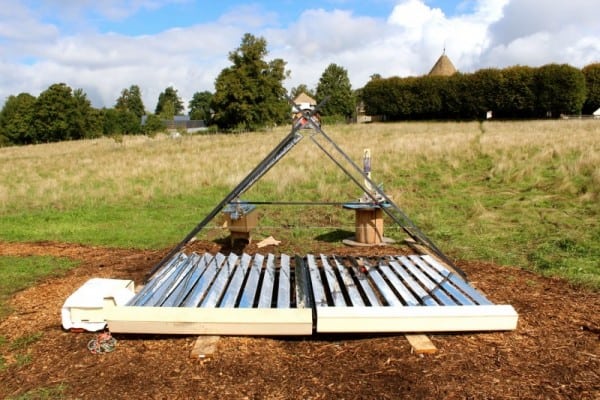
© Elsa Pereria
The Solar-OSE is a French-made solar concentrator which harnesses solar energy in the form of steam. Four square metres of mirror strips on the ground reflect sun rays onto a receiving panel six feet overhead. This in turn heats a black pipe full of water. “Heat power for food processing, textile and chemical industries account for ten percent of our energy requirements,” says François Veynand of Open Source Ecology. “Far cheaper to use solar power than to stock up on, say, gas.” Conceived for small businesses, Solar-OSE produces far more than just steam. With production costs at around €1,500 (£1,100) it enables farmers, by means of thermal energy, to extract essential oils, sterilize containers or pasteurise milk or apple juice.
2. SunZilla: the portable solar generator
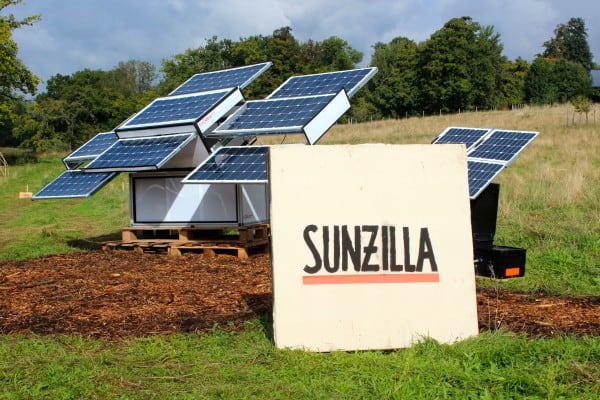
© Elsa Pereria
Created by a group of friends from Berlin, SunZilla replaces the diesel of ordinary generators with sun rays. The concept is remarkably simple. Two boxes, one of which contains the batteries and the other the solar panels. Add a plug and a switch, and you’ve got your finished product. “Our aim was to make it super-simple, such that you don’t need a technician to demonstrate how it works,” explains co-creator Vivien Barnier. “And because it’s built according to a very flexible modular system, it can be adapted to your needs.” The smallest model provides around 150 watts: enough to charge some 20 mobile phones and light up three rooms, all thanks to solar energy. For the time being these young engineers are primarily selling the generator to festivals, but they’re not discounting the possibility of exporting it to communities with little or no electricity.
3. Bicitractor: the pedal-operated tractor
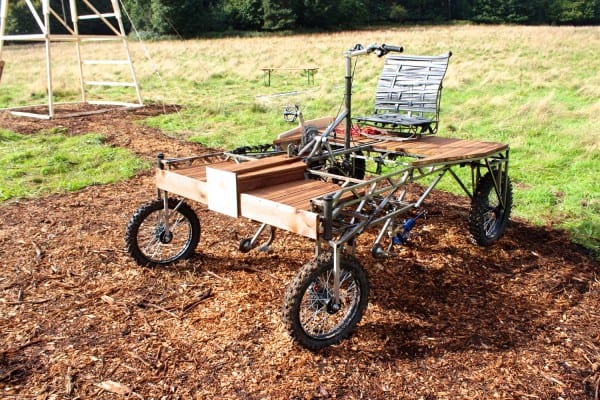
© Elsa Pereria
The people behind the gears, cogs and sprockets of this gigantic wood-and-iron engine go by the name Farming Soul. Dreamed up by French farmers and cultivators, the collective develops pedal-operated agricultural vehicles. Aimed at small or medium scale farms, the Bicitractor (a tractor powered by pedalling) can be used to plough, dig up or even weed the earth, thanks to a tool module that’s attached to the tractor and connected to a voilier (yacht) system. “Yesterday we were testing the machine in a field, and instead of having to cross the field four times – as you would if you were weeding it by hand – we did it in one,” says inventor Jean-Pierre Comte. “You go around four times faster by tractor, you’re comfortable and you don’t have to put any pressure on your arms or back.” All in all, a cheap, clean alternative to ordinary tractors which can cost around £20,000, compared to £700 for the Bicitractor.
4. Kitchen B: the kitchen of the future
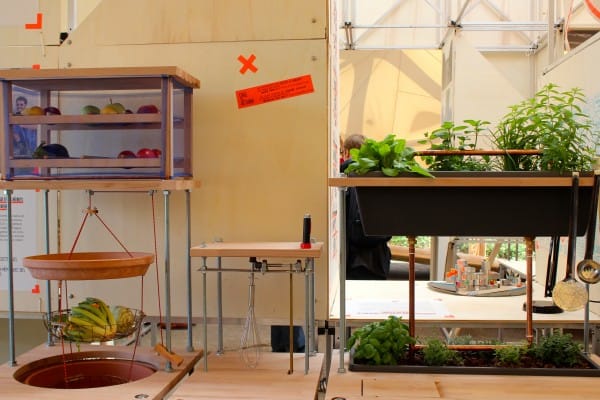
© Elsa Pereria
Did you know that it’s a bad idea to store potatoes next to onions? Or that burying carrots in sand can help preserve them for almost a month? Developed by four French designers, Kitchen B pitches itself as an educational project that aims to raise awareness of our bad food storage habits. “It’s important to understand that the convention of putting everything in the fridge is no good,” say the Kitchen B team. “Not that we’re suggesting that you need to blow up your fridge. We just need to throw some new solutions out there.”
5. Faircap: the universal filter
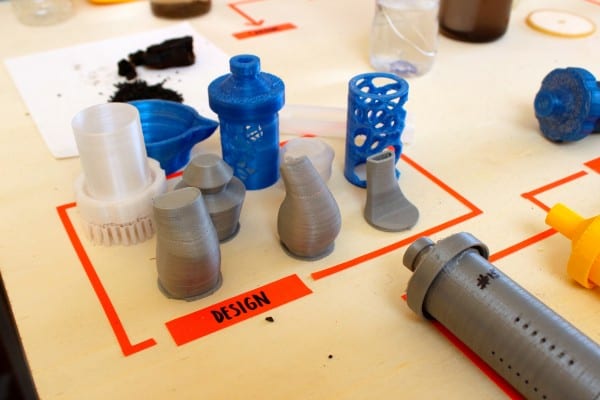
© Elsa Pereria
It was on a trip to the Amazon that a great conundrum dawned on Mauricio Cordova: although humans can’t live without water, millions of people have to go without access to drinking water. That’s when he struck on the idea behind Faircap, an antibacterial filter that can be adapted to fit the neck of any bottle. It consists of two parts: activated carbon to purify the water, and a plastic membrane (which can be printed with a 3D printer) to catch the chlorine and other bacteria. These essential materials are cheap so Cordova is able to keep the cost of Faircap down, while ensuring it is both environment-friendly and beneficial to small-scale producers. “My goal,” explains Cordova, “is to make the filter cheaper than bottled water.” The targeted production cost is just €1 (75p) per cap.
First published by Collectively
